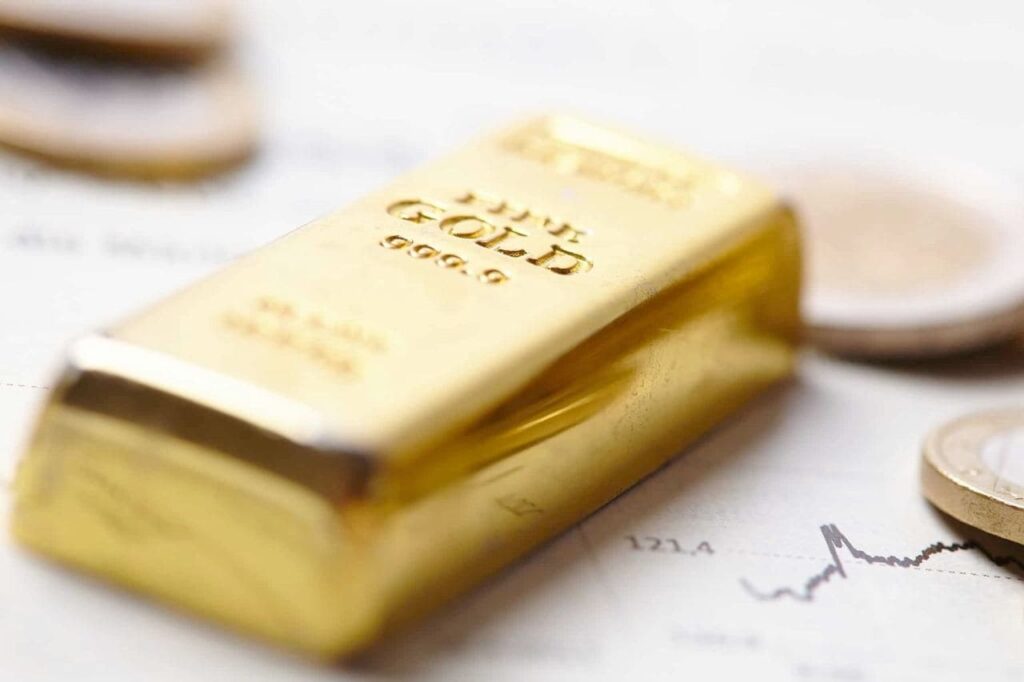Gold (XAU/USD) reached a 5-day high of $2,417 per ounce this week, driven by escalating geopolitical tensions and pivotal economic indicators. Amid rising uncertainties, investors turned to the precious metal as a safe haven, resulting in a significant surge in its value.
A series of geopolitical events and economic indicators directly influenced the increase in prices. Following an Israeli attack on Iran, gold prices spiked and remained steady as Tehran signaled no immediate retaliation, calming initial market fears yet maintaining a high-tension atmosphere conducive to safe-haven investments.
Geopolitical tensions fuel Gold’s ascent
In response to the attack, Tehran’s indication of no immediate retaliation appeared to stabilize markets temporarily. However, the ongoing high tensions in the Middle East have created an environment conducive to investments in safe-haven assets like gold.
This was evident as gold prices remained high, even as they stabilized at around $2,394 shortly after the initial spike.
Economic indicators play a supporting role
While the geopolitical landscape was the primary catalyst for the rise in gold prices, economic factors have also played a significant role.
Despite the U.S. economy showing signs of strength, which typically leads to a decline in gold prices, the scenario was different this week. Recent remarks by Federal Reserve officials have been critical. Both Chicago Fed President Austan Goolsbee and Atlanta Fed President Raphael Bostic indicated a delay in interest rate cuts, contrary to some market expectations.
Bostic underscored that the Fed might not reduce rates until the end of the year, highlighting a commitment to maintaining restrictive monetary policies as progress on inflation has stalled.
However, this hasn’t translated into a pickup in U.S Treasury bond yields, with 10-year US Treasury yields falling to 4.58% on Friday.
Market reactions and technical insights
The market’s reaction to the unfolding events was clearly reflected in gold’s price movements and the broader financial indicators.
The US Dollar Index (DXY) has slightly declined below 106, reflecting shifting expectations for rate cuts from other central banks, such as the Bank of England and the Reserve Bank of New Zealand. This could impact gold prices, as changes in the dollar’s strength directly affect the metal’s dollar-denominated price.
Technical analysis

Over the past week, the gold market has experienced significant volatility, with the price of gold surging to break the $2,400 mark, reaching a peak of $2,417. This price movement was accompanied by dramatic fluctuations in the Relative Strength Index (RSI), a key indicator used by traders to gauge market momentum and potential price reversals.
Initially, on April 15th and 16th, the RSI readings hovered in the high 70s, indicating that gold was entering overbought territory. This typically suggests that the asset might be overvalued, and a price correction could be imminent as traders might take profits.
However, the scenario took a sharp turn on April 17th and 19th when the RSI spiked again into the overbought region, aligning with the gold price’s ascent past the $2,400 threshold. Such high RSI values usually signal excessive buying momentum that could lead to a pullback as the market seeks equilibrium.
Despite these spikes, the RSI has recently settled around the mid-50s, indicating a more neutral market stance. This moderation in the RSI suggests that the initial buying frenzy has cooled off, and the market is now stabilizing, with gold prices finding a new, albeit temporary, equilibrium around this higher price level.
However, trading based on technical analysis should also consider other market factors, such as the potential for escalated geopolitical tensions or the influence of economic data on Federal Reserve policies
Disclaimer: The content on this site should not be considered investment advice. Investing is speculative. When investing, your capital is at risk







